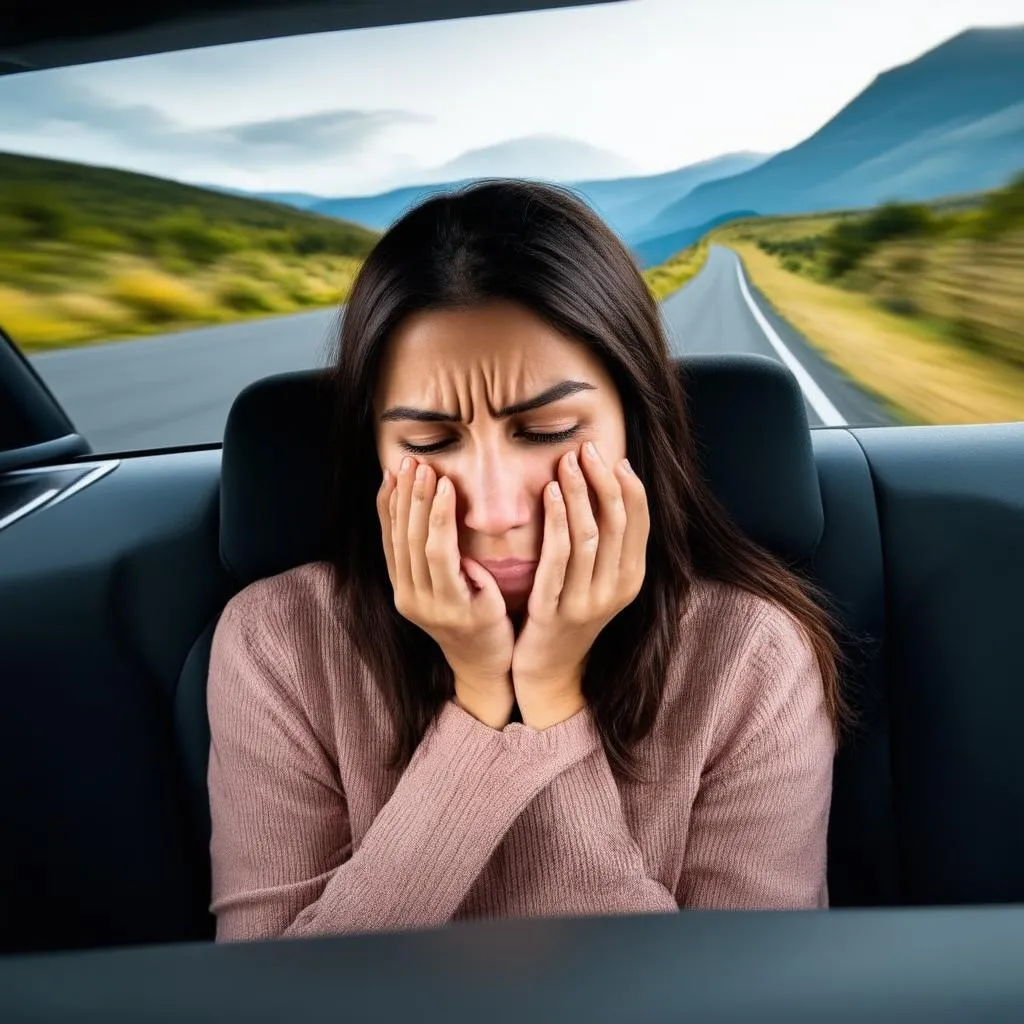Picture this: you’re cruising down the Pacific Coast Highway, the sun is setting over the ocean, and your favorite road trip playlist is blasting. Sounds like a dream, right? But suddenly, a wave of nausea hits you. Your head starts spinning, and you feel a cold sweat coming on. Yep, travel sickness has officially crashed your road trip party.
But don’t despair! Understanding What Causes Travel Sickness is the first step to preventing it from ruining your next adventure.
The Science Behind Feeling Queasy
Travel sickness, also known as motion sickness, occurs when your brain receives conflicting messages from your sensory systems – your inner ear, eyes, and skin – about your body’s motion. Let’s break it down:
- Your inner ear: This is your body’s built-in motion sensor. It detects acceleration, rotation, and movement.
- Your eyes: They see that you’re moving, or in the case of reading in a car, that you’re stationary.
- Your skin and muscles: These provide information about your body’s position in relation to gravity.
When these messages don’t align – for example, if you’re reading a book in a moving car, your inner ear senses motion, but your eyes see stillness – your brain gets confused. This sensory mismatch is what triggers those dreaded symptoms like nausea, dizziness, and vomiting.
Common Travel Sickness Triggers
While any mode of transport can lead to travel sickness, some common culprits include:
- Cars: Especially winding roads or traffic jams where there’s constant stopping and starting.
- Boats and ships: The rocking motion on the water is a surefire way to upset your equilibrium.
- Planes: Turbulence and changes in altitude can play havoc with your inner ear.
- Trains: Looking out the window at the passing scenery can create a sensory conflict.
- Amusement park rides: Need we say more? Those loops and drops are designed to thrill, but they can also make you queasy.
Conquering Travel Sickness: Tips and Tricks
Now that you know what causes travel sickness, let’s explore some proven strategies to help you prevent and manage it:
1. Pre-Trip Prep
- Choose your seat wisely: Opt for seats where you’ll experience less motion, such as the front seat of a car, the upper deck of a bus, or a window seat on a plane.
- Eat light: Avoid heavy, greasy, or spicy foods before and during travel.
- Stay hydrated: Dehydration can worsen travel sickness, so drink plenty of water or clear fluids.
- Get some fresh air: Crack a window or take breaks to step outside for some fresh air.
2. During the Journey
- Fix your gaze on the horizon: This helps your brain align your visual input with your inner ear’s perception of motion.
- Close your eyes and relax: If possible, try to take a nap or meditate to distract yourself from the motion.
- Distraction is key: Listen to music, chat with a travel companion, or engage in a light activity to keep your mind occupied.
- Acupressure wonders: Consider using acupressure wristbands like Sea-Bands, which apply pressure to a specific point on your wrist believed to relieve nausea.
3. Seek Professional Advice
If your travel sickness is severe or persistent, consult with your doctor. They may recommend medications like over-the-counter antihistamines or prescription motion sickness patches to help you manage your symptoms.
Travelcar.edu.vn: Your Partner in Adventure
Remember, travel sickness doesn’t have to hijack your travel plans! By understanding its causes and employing these helpful tips, you can conquer motion sickness and embark on your next adventure with confidence.
For more travel tips and resources, visit travelcar.edu.vn. We’re your one-stop shop for all things travel!
Internal Links:
- Discover effective ways to combat travel sickness: How to Stop Travel Sickness
- Find out how to get over travel sickness for good: How to Get Rid of Travel Sickness
Shortcodes:
 Car Ride Travel Sickness
Car Ride Travel Sickness
 Natural Remedies for Travel Sickness
Natural Remedies for Travel Sickness